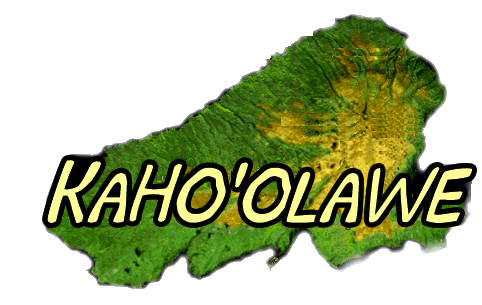
Home
Introduction to Kaho'olawe
PowerPoint
Introduction
Kaho'olawe Surveyor Software
Development Team
Role Cards
Key Elements for Reinhabiting
the Island
Presentation
Assessment
Related readings:
|
ARCHEOLOGY Archeology
and History Historical resources include shipwrecks, settlements areas, and infrastructure mostly associated with the penal colony, ranching and military eras. Currently, more than 540 archeological and historical sites and more than 2300 features have been identified on the island. (KICCR, 59) An
Island Named Kanaloa The earliest accounts of Kaho`olawe have been passed from generation to generation through chants and storytelling. Chants attributed to kahuna of Kamehameha I indicate that Papa gave birth to Kaho`olawe in association with the creation of the other major Hawaiian islands. The 19th century Hawaiian historian, David Malo, subscribed to this account; however, the Swedish adventurer and collector of Polynesian lore, Abraham Fornander, recorded a different version of Kaho`olawe’s creation. Fornander wrote that all of the Hawaiian islands, except Kaho`olawe came from the relationship between Wakea--the mythical ancestor of all Native Hawaiians--and Papa and that Kaho`olawe came from the Hawaiians--and Papa that Kaho`olawe came from the Hawaiian goddess Hina, famous for her affiliations with another Hawaiian island, Moloka`i. (KICCR, 17-18) Pele, Hawai`i's fire goddess, also played a predominant role in Kaho`olawe's legends. The 19th century Hawaiian historian, Kepelino, recounts how Pele brought fourth the sea around Hawai`i from Kaho`olawe. It had been given to her by her parents, and she brought it to Hawai`i, to Kaho`olawe, where she emptied it onto the land and created the oceans around the islands. (KICCR, 18) According to Hawaiian legends, as each of the Hawaiian islands was discovered and settled by humans, the spirits fled to other uninhabited islands. After its creation, Kaho`olawe was a place where only gods, goddesses, and spirits. It became the last bastion for dwellers of the spirit world. Traditional literature abounds with other references to Kaho`olawe in relation to the exploits of many of Hawai`i's other gods, goddesses, and spirits. (KICCR, 18)
Legends and Traditions. KICCR: Kaho`olawe: Restoring a Cultural Treasure. Final Report of the Kaho`olawe Island Conveyance Commission to the Congress of the United States. March 31,1993. |
